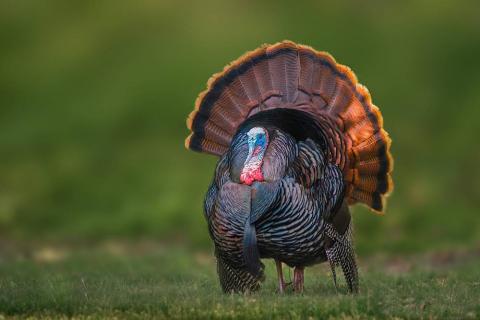By Sam White
When most folks think of a tropical vacation surrounded by beautiful azure waters, sandy beaches and plenty of angling opportunities for a wide variety of species from inshore to offshore, our minds usually wander to places like the Bahamas, or some remote Caribbean destination featured in a travel brochure or magazine article. But those beautiful clear waters might be closer to home than you think. Enter the Florida Keys, a string of tropical islands stretching about 120 miles from the southern tip of Florida and joined by the Overseas Highway. On one side, the Atlantic Ocean; on the other, Florida Bay and the Gulf of Mexico.

Pictured: Aerial view of the Overseas Highway at sunset
Key Largo and the Upper Keys
The first and longest island in the chain is Key Largo, roughly an hours’ drive from the Miami International Airport. It’s bordered to the west by the backcountry of the Everglades National Park, and to the east by the Atlantic Ocean, where the Gulf Stream races northward just a few miles offshore.
Because anglers have the option of fishing either inshore in Florida Bay, along the reef or offshore, the angling opportunities are numerous. In the Gulf Stream, mahimahi take center stage throughout the year, while sailfish are a top target in the fall and winter months, although they can also make an unexpected appearance at any time during the year. Along the reefs, yellowtail snapper are a choice catch; charter boats frequently anchor and chum for ‘tails using light tackle. This is a great way to get young kids interested in fishing, as the action can be fast and furious (not to mention a fish box full of tasty snapper isn’t bad either). Inshore can mean trout or reds, or tarpon and snook, depending on the season and the weather.
Key Largo is also home to the spectacular John Pennekamp Coral Reef State Park, the first undersea state park in the United States. The park was established in 1963 as a way to protect and preserve a portion of the only living coral reef in the continental United States. It extends approximately 3 miles offshore and extends for some 25 miles along the coast of Key Largo; it’s also on the National Register of Historic Places. Needless to say, the diving and snorkeling is absolutely world-class here.

A Key West tarpon, ready for release.
Islamorada and Marathon: Fishing Central
It’s impossible to mention sport fishing in the Middle Keys without bringing up the legendary hotspot which is Bud ‘n Mary’s Marina. Established in 1944 and home to scores of top-shelf captains and guides, it’s the epicenter of Islamorada’s fishing community. If it swims in the surrounding waters, there is someone willing to take you out to fish for it; more IGFA world records for more species have been caught here than anywhere else on the planet.
One of the prime targets for those seeking big game is the broadbill swordfish. These monsters of the deep can be targeted during the daytime by dropping rigged baits—usually squid or belly strips of bonito or mahi—into the depths, often using large electric reels. Swordfish can also be caught at night here as well. If you’re looking to scratch one off your bucket list, this is a great spot to do it.
For a unique experience, head over to Robbie’s Marina, also located in Islamorada, where you can hand-feed tarpon. The staff will sell you a small bucket of bait for a few bucks and instruct you on the best way to do it but it’s an Instagram-worthy experience for anyone.

A solid mutton snapper, caught on a wreck off Islamorada.
Key West: Land’s End
At the end of the road—Mile Zero of the Overseas Highway—is the village of Key West, the southernmost city in the United States (and it’s actually closer to Havana, Cuba, than it is to Miami). A host of colorful characters have called Key West home over the years, including Ernest Hemingway, Jimmy Buffett, Pres. Harry S. Truman and many others. Treasure hunter Mel Fisher based his operation here when he recovered millions of dollars’ worth of gold and silver from a 17th-century Spanish galleon called the Nuestra Señora de Atocha, which sank just off the coast in a hurricane. Fisher established the Mel Fisher Maritime Heritage Society Museum, where visitors can view and even touch some of the recovered items from the Atocha and her sister ship, the Santa Margarita.
While there are plenty of captains and guides ready to fish for everything from blue marlin offshore to bonefish on the flats, Key West is synonymous with great fishing for the silver king: tarpon. Traditionally the season is in the spring and early summer, with a strong migration of these powerful gamefish beginning in early May and tapering off around July, but there are resident fish in these waters year-round. They can be caught using a very wide variety of techniques, including live and dead bait, artificial lures and even on fly.
Key West also has a very wide variety of accommodations plus plenty of restaurants and nightlife. A trip down Duval Street is a must for visitors, as is Mallory Square for the daily sunset celebration.
No matter the destination, there’s something about the Florida Keys that keeps visitors coming back year after year for a new and exciting adventure. It really is America’s Caribbean.




























